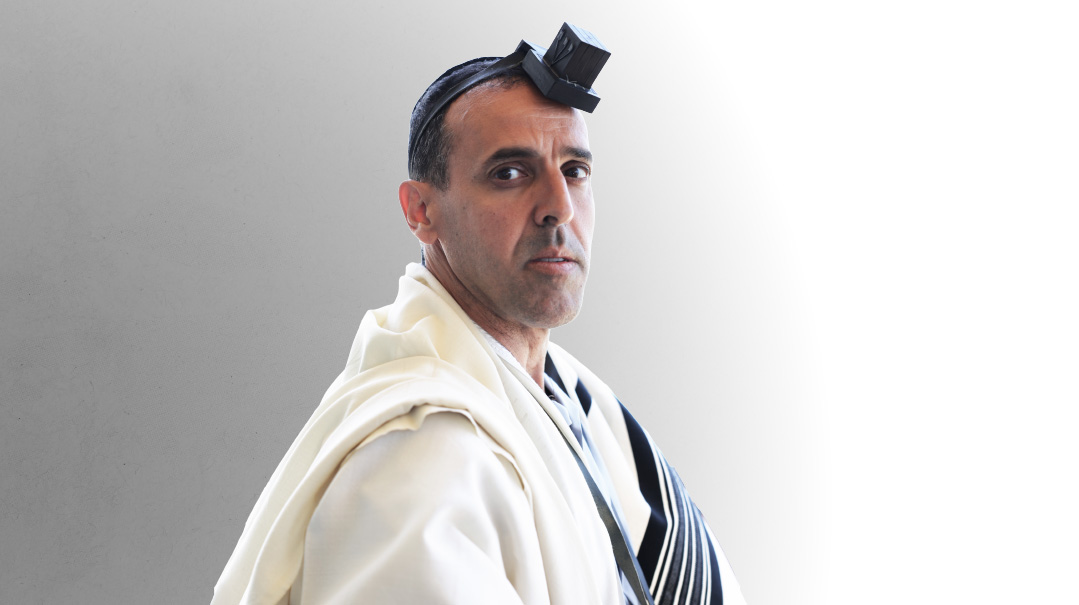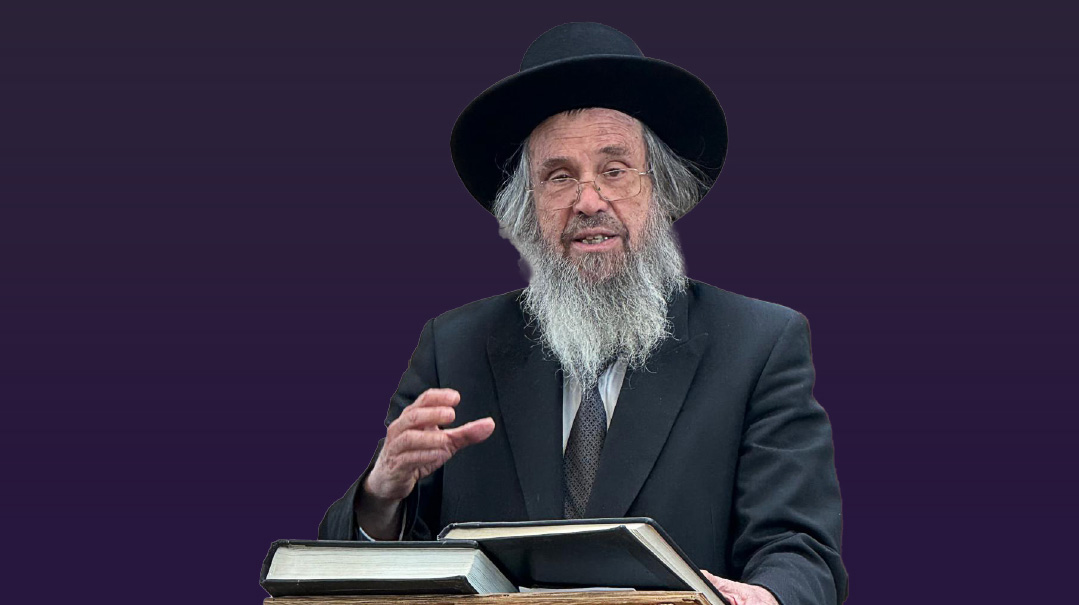The Heart of the Art

The would-be artist and fresh baal teshuvah was petrified. Did the holy sage mean he should stay away from art?
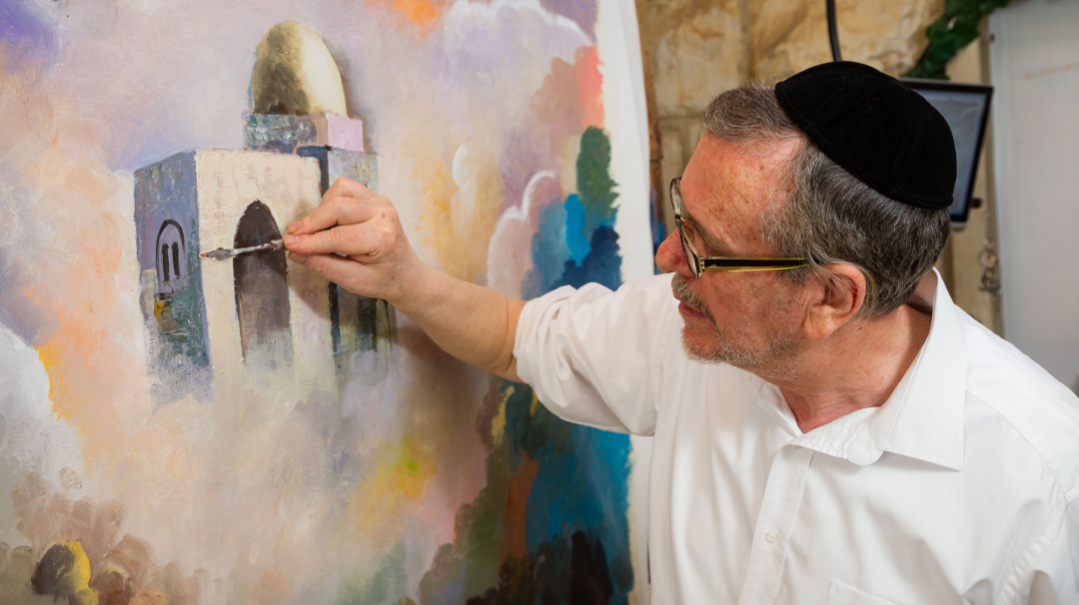
Photos: Elchanan Kotler
When the Baba Sali came to Yossi Bitton in a midnight dream and gave him what felt like an angry push, the would-be artist and fresh baal teshuvah was petrified. Did the holy sage mean that he should stay away from art? Fifteen years later, with the clarity and stability that comes with the passing of time, he finally felt it was okay to embark on what he was born to do all along
T
he apartment in Mekor Baruch is bathed in sunlight and filled with art. Off the mini kitchen is a small stone studio, a giant canvas pinned to one wall. A half-finished painting glows gently; you can see sun-kissed skies and Jerusalem stone beginning to take shape. An iPad for sketching is attached to the wall as well. Artist Yossi Bitton walks over, jots something down with a stylus, and turns back to appraise his work.
Yossi’s paintings are a marriage of deep feelings and the ethereal. A multihued Kosel cries blue tears, a Yerushalayim untouched by blood and war glows gently pink, and the sea splits with a roar as multitudes of colorful travelers seek refuge on the dry land within. “I paint things worth putting my entire self into,” Yossi explains. “No flowers and meadows for me, not when there’s Har Sinai to depict and the Bush that didn’t burn to capture with color.”
The 67-year-old artist’s off-the-charts talent and tremendous expertise belie his experience; Yossi’s only been painting seriously for the past 18 years, but it looks like he’s been doing this his whole life. Yet while he dedicated himself to other pursuits until then, both spiritual and professional, the desire to paint was steadily simmering under the surface.
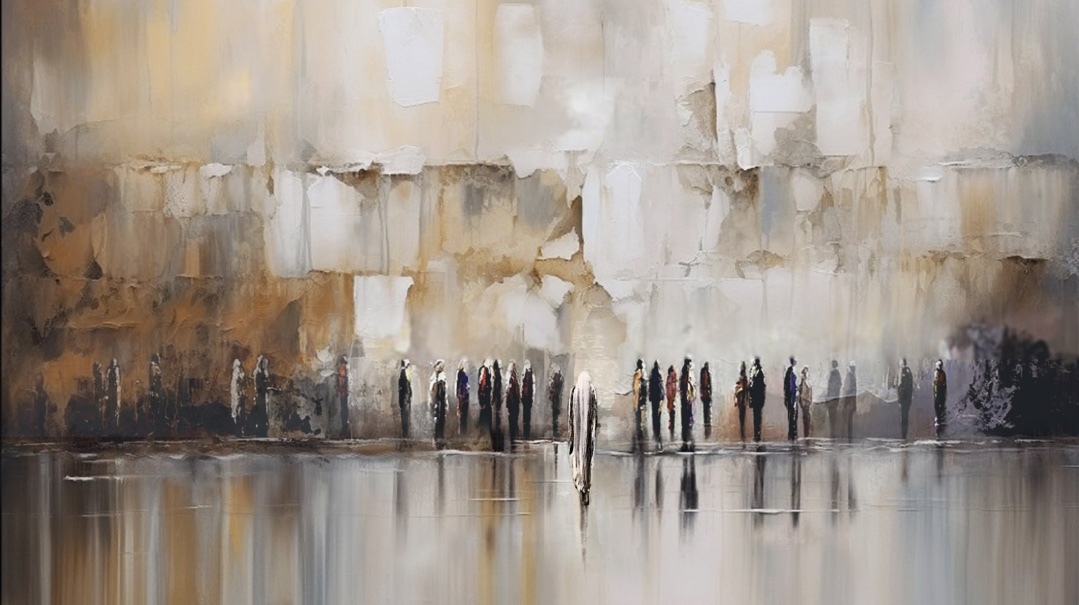
Hollow Success
Growing up in Tzfas in a traditional yet non-observant family, young Yossi spent most of his free time in the Artists’ Colony with his friend Benjamin, watching the artists generate magic with their brushes.
“We would go home, practice what we learned, and then return the next week to learn more. I myself was never trained, never took courses or classes,’’ he says. “All those hours I sat watching was my schooling. I learned a tremendous amount from the artists, especially husband and wife, Chaim and Aliza Naor, watching them mix colors, shade, sketch. I learned techniques and trade skills. It was the school of life, and I learned all I could.”
After finishing high school, Yossi enlisted in the army. Never one to look for the easy way out, he signed up for a year of volunteering and then did three years of service. When he was discharged, at just 21, he found himself a place in the Israeli music sphere. “I entered the music scene with a bang,” he reminisces.
Almost all of Yossi’s family members are musical, with several musicians and one wedding singer in the clan. Yossi himself plays bass, guitar, and piano. But ultimately he found his niche as a producer, and successfully coordinated events and festivals to sold-out theater halls. He hobnobbed with the famous, arranging to fly celebrities to Israel.
No detail was too small, Yossi says, remembering how he had trees cut down in Rosh Pinah to make space for a huge music festival.
And so the next couple of years went: His success rose in the music industry, while his passion for creating art lay dormant.
“It’s a strange thing to meet all your goals so young,” Yossi Bitton says. “I felt empty. I had it all. Yet I had nothing.”
Up to Here
After seven years in the music industry, Yossi was ready for a break. He traveled to Europe, saw the sites, played music, and lived like a carefree nomad.
It was in Denmark where Yossi met Tamar, a non-Jewish haute couture designer who would eventually become his wife. Aside for their love of arts, they both shared something in common: They were both searching. She was looking for meaning, he was looking for answers. Eventually, she would find it in Judaism, he would find fulfillment in coming back to his roots.
For now, though, they went their separate ways, and Yossi returned to Israel. Still searching for that elusive something that would bring him peace, when his friend Victor Orchayon a”h, a former professional soccer player who became a baal teshuvah after retiring, convinced him to give yeshivah a try, he enrolled in Yeshivas Ohr Somayach.
Absorbed in his newfound heritage, the newly minted baal teshuvah threw himself into learning, figuring that creative pursuits were now off limits to him.
Still, when Victor got engaged, Yossi took out his charcoals that had lain forlorn aside from sketching, and created a stunning depiction of the Baba Sali as a wedding gift for his good friend and chavrusa.
Yossi’s eyes travel to the corner of his home, where a framed painting of the Baba Sali smiles kindly down on us.
“I used charcoals — I had given up most of my paint supplies at that point — and it came out wonderful,” Yossi remembers. “I presented it to them, but Victor told me, a bit uncomfortably, that his bride really wanted something with color. So I took it back and colored it in a bit. With Panda pastels.”
“Can you believe that?” His wife interjects with a laugh. “Panda pastels from a first-grader’s school supply list. That’s all he had.”
“I gave it back to them, and they thanked me,” Yossi continues. “But I had a feeling they weren’t satisfied. Sure enough, the next time I visited the young couple, the painting was nowhere in sight.”
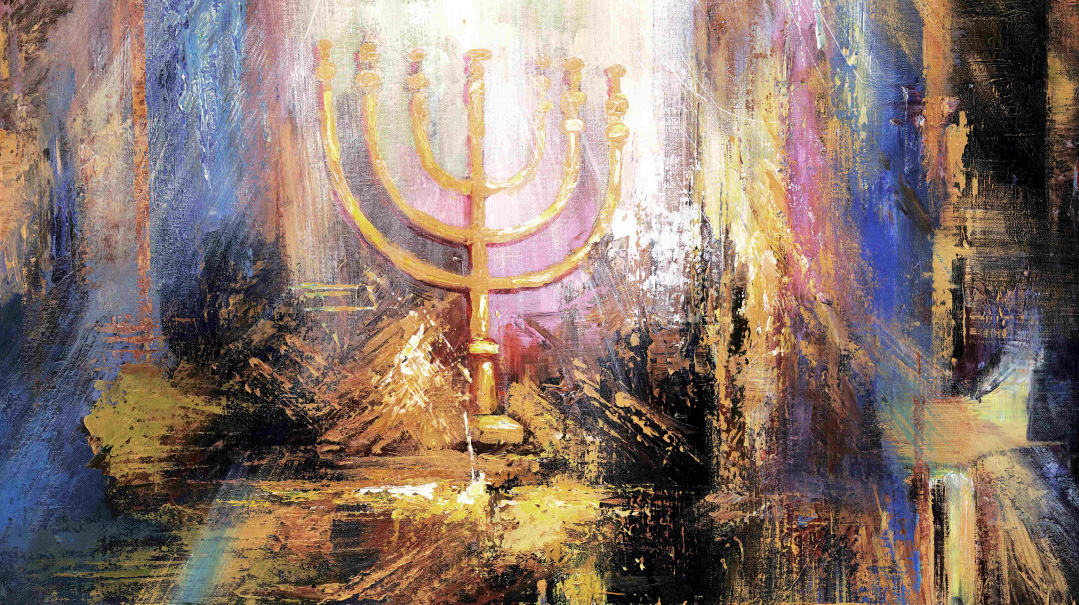
Finding Their Way
A year after drawing the painting, and four years after Yossi had first met Tamar, they reunited in Israel. He was a committed baal teshuvah, and she was a giyores. They married and began building their home, though the beginning wasn’t free of challenges. “We juggled the extremes that come with a new frum life, but eventually, we found the shvil hazahav, the golden path,” Tamar shares.
The couple had Yossi’s family support, and eventually, most of Yossi’s family was chozer b’teshuvah as well.
One night, shortly after his marriage, Yossi fell asleep and had a frightening dream. He saw the Baba Sali himself, his face looming over him. And then, while Yossi looked on in fear, the great sage put out his finger and gave Yossi a push. Yossi woke up, terrified. It was three in the morning, but he had the presence of mind to call Asher, Victor’s brother, not wanting to put Victor himself on the spot. “Where is my painting of the Baba Sali?” he shouted.
Victor and his wife had recently moved out of their apartment in the Shomron town of Emanuel, but Asher, who still lived there, had the key. Frightened for Yossi, Asher went to their apartment in the middle of the night.
After a tense silence, he got back on the line. “Yossi, I… uh, I found it.”
The painting was crumpled into a ball in the backyard, buried under leaves and dirt. Most likely it had been left behind in the move and had drifted out back.
Back in Jerusalem, Yossi closed his eyes. “Asher, place it exactly as it is in a plastic bag. Send it to me in a taxi, and I’ll pay for it.”
Asher refused to let Yossi spend hundreds of shekalim on a taxi, though, and said he would deliver it himself the next day. Yossi spent the rest of the night in a frightened daze. When Asher finally came the next day, Yossi gingerly took the crumpled painting and opened it ever so gently, careful not to crack the paper. He ironed it with a clothes iron, and pressed it under books for three weeks. And then, when the picture was finally straightened out, he took it to a framer.
“I need this framed, right now,” he told him.
Yossi gestures toward the painting. “And there it is. Forty years later.”
The incident, eerie and otherworldly as it was, frightened Yossi.
“The Baba Sali woke me up, gave me that final push to teshuvah, all the things I’d been holding back from. But I also felt that he was warning me away from art. It’s a responsibility to create tangible things, especially holy ones. Perhaps I wasn’t ready. And so I stayed away.
“As a baal teshuvah, there’s so much to learn, an entire calendar of new experiences. You need to live the life, to get to know it, and really to get into the schedule of the year and the holidays, and that took a while,” Yossi explains. He didn’t feel there was room in his life for him to devote significant time to his art, and so he drew as a hobby but nothing more.
Meanwhile, Yossi worked as a rebbi in a Talmud Torah, a position he held for about ten years. “He’s fantastic with children,” Tamar shares. “Until today, he still has students who contact him, telling him how much he impacted their lives. They really loved him.”
After about a decade in chinuch, Yossi felt it was time to move on. He dabbled in high tech, but he never found what he was looking for.
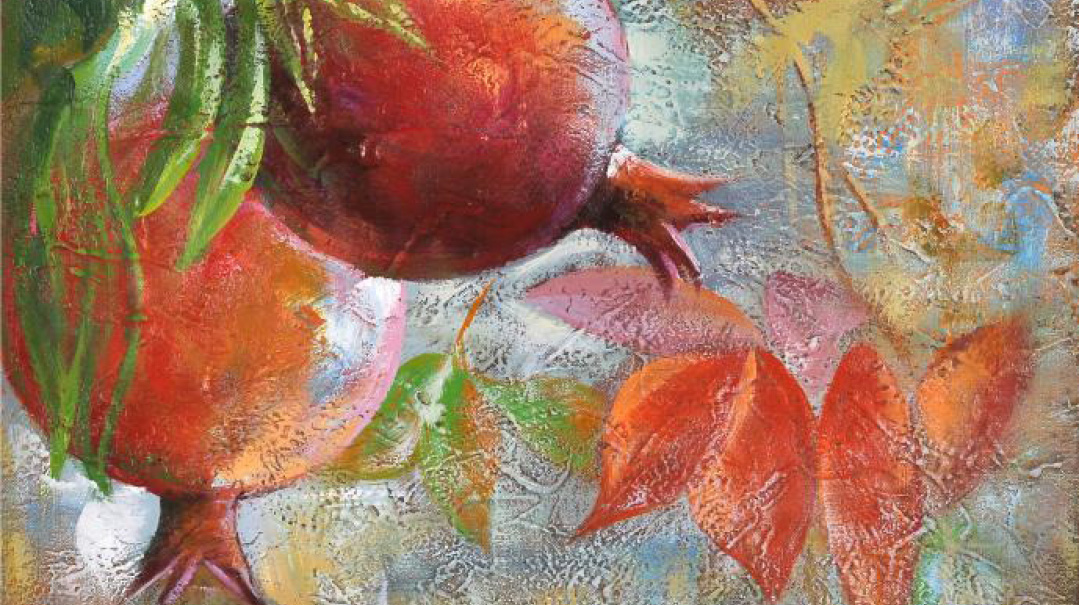
Living the Blessing
Fifteen years after he first had the dream about the Baba Sali, Yossi had gained the clarity that can only come with the passing of time. And at long last, he felt that it was okay to do what he had been born to do.
“I began to paint,” he says simply, “for real. Not just sketches on napkins and late at night. I started with fruit. Giant, life-like stills of fruits.”
And the serenity that descended when Yossi began painting at long last was palpable.
“Peace came into the house, a sort of relief,” Tamar says. “It was like, at long last, he could breathe. Artists are born, not made. G-d gifted him with something tremendous, and he had been stifling it. When he finally reconnected with his exquisite talent, it was like the sun came out after all these years.”
One day, Yossi’s son found one of his father’s pieces, a stunning pomegranate bursting with seeds, and was startled by its brilliance. “Abba, you must share this with the world!” he urged him.
Buoyed by his son’s encouragement, albeit tentatively at first, Yossi Bitton showed the Judaic art world what he was capable of. And they welcomed him with open arms.
“Customers ask for flowers, fields, but our history is so rich. If I’m going to put myself into something, let it be holy and spiritual. If I’m going to give a customer a piece of myself, it should be worth it.
He receives orders from around the world. “A client of mine from Australia ordered a huge menorah painting. He told me how much that meant to him, so deep in the golah. Another customer ordered the Shivas Haminim, seven different canvases, each one larger than life. She says not a person enters her house who doesn’t stop to comment on the artwork.”
This Pesach, his pieces will be on display at the Waldorf Astoria. “I’ve collected some of my favorite pieces from the past years, but there are also some brand-new originals specially created for the exhibition.”
Yossi shares a little about the artist’s perspective on his work. It takes time to grow as an artist, he says. Not every painting is a masterpiece. It’s a long process, not easy, and sometimes devastating. Music, art, dressmaking all require long processes that are not guaranteed rewards. Art isn’t a machine, with perfect results every time.
“Yossi has stacks of half-done, quarter-done paintings that he’s put away,” his wife says. “And then years later, he might come back to it and finish it off. Not always, but it has happened. Everything has its time. Sometimes it’s just not the right time.
“He’s fought hard for this to work. He can kill himself for a piece and then it doesn’t work out. And when it does turn out wonderfully, then the piece he connected with for three months is now handed over to someone else. And that’s hard as well. But it’s also a tremendous zechus.”
“Most artists’ works become renowned after they pass away. That’s when they become famous and become worth something. So to be lucky enough to do your art and also be able to live from it, that’s very fortunate,” Yossi says. “It’s blessed. To do what you were born to do is a blessing.”
(Originally featured in Mishpacha, Issue 1006)
Oops! We could not locate your form.





